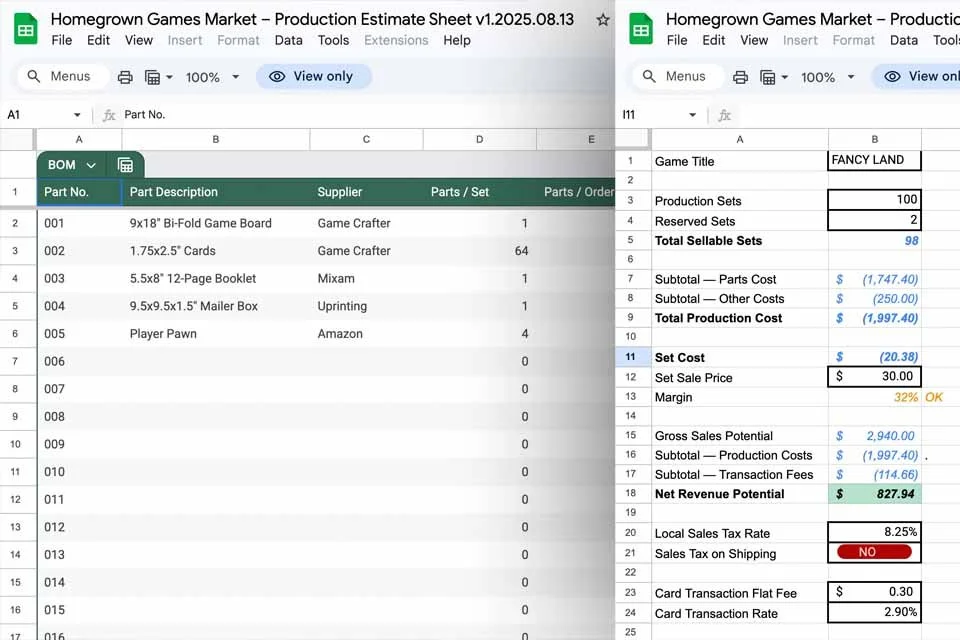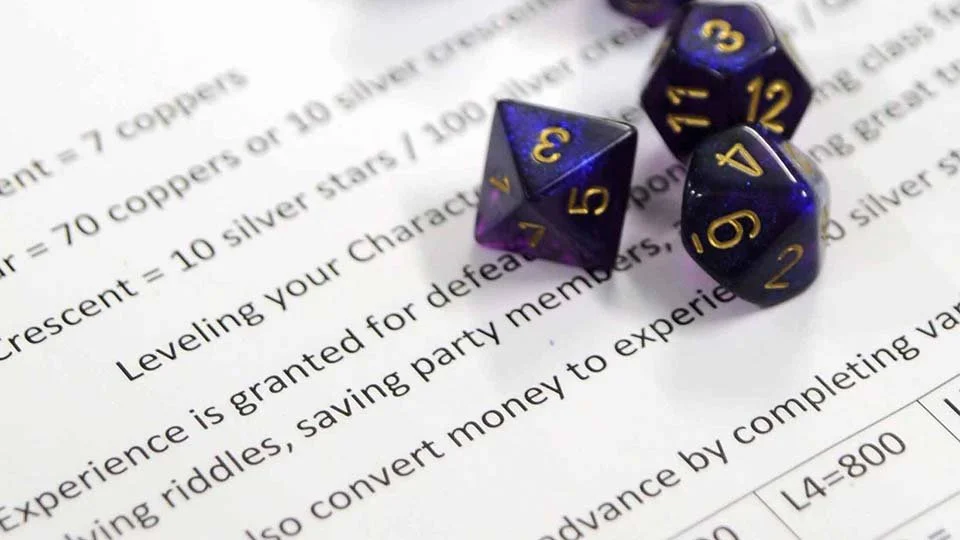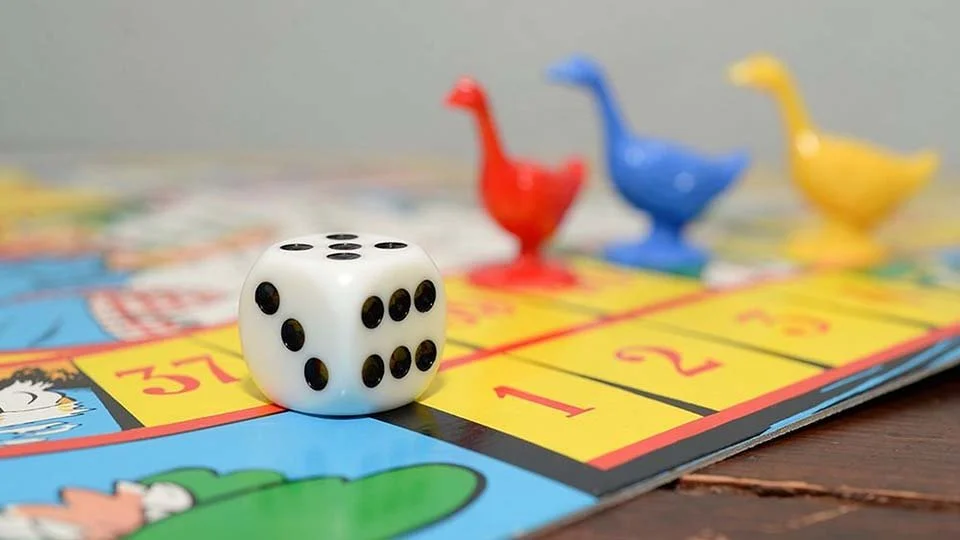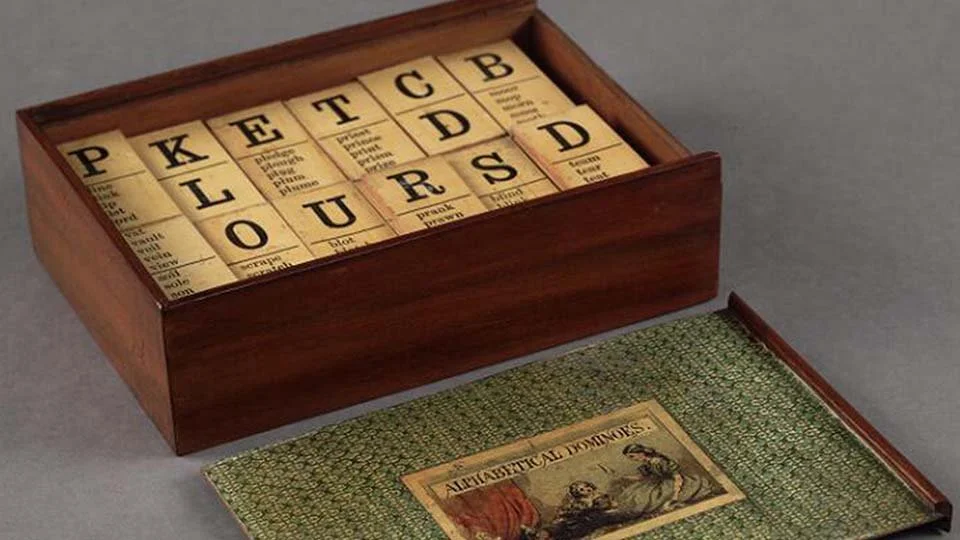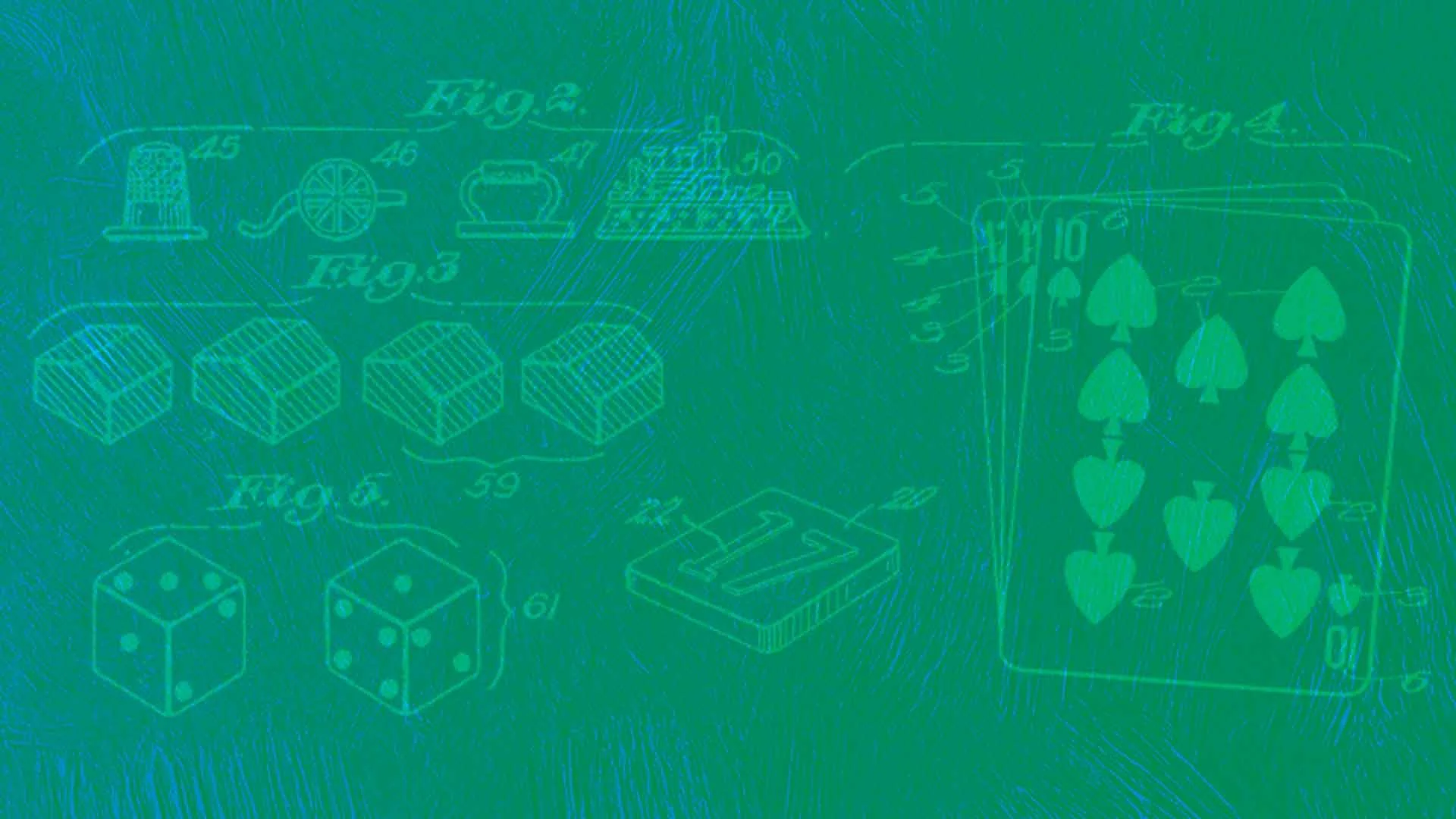
How do you make a small batch game?
Designers typically only make 20–100 copies of any given title for a night market event. The minimum order for most professional manufacturers is 1,000–1,500 copies, with economies of scale really kicking in at around 3,000 copies. As an independent designer, how do you make 30x fewer copies but still make something you’re proud to sell?
Buckle up: It’s time to get crafty.
Note: Affiliate links are used for Amazon. Websites cost money to run, y’all!

Production Estimate Sheet
To help you plan your game, we’ve created a Google Sheet that you can use to estimate your production costs and see impacts of pricing for your games.
Types of Indie Market Games
Indie market games can take any form—zine-like rulebooks, unpolished prototypes, or experimental art pieces. Here are a few ways to think about the games that you might create:
Field Editions
A rough-cut, ready-to-play edition of a game, usually coming in envelope or plastic bag. Players may need to add their own common components (e.g., dice or standard playing cards).
Experimental and minimalist, Field Editions are direct expressions of the designer’s raw intent.
Target price: $5–15
Production budget: $1–7 / set
Table Editions
A complete, self-contained edition of a game, printed in small batches, with all necessary components for play and sturdy packaging for storage.
While not fully handmade or deluxe, Table Editions are cleanly produced and thoughtfully presented.
Target price: $15–25 (card game), $25–45 (board)
Production budget: $8–24 / set
Heirloom Editions
A handcrafted or premium edition of a game, often featuring lavish illustration or specialty components like wooden boards or etched pieces.
Difficult to mass produce, Heirloom Editions aren't just games but are also unique, artistic statement pieces designed for display.
Target price: $50–100
Production budget: $25–50 / set
Boxes & Packaging
-
Let’s get this out of the way: The traditional two-piece, lid-and-base game box is expensive to make.
Like, really expensive. Commonly one of the most expensive components of a game, mass-produced or otherwise.
With small batch manufacturing, you can significantly optimize your costs by being smart about how you package your game.
If your game needs a box, look for packaging constructed from a single sheet — like mailer boxes or tuck boxes — or premade cases that you can embellish — like VHS boxes or pencil boxes.
Get creative, and don’t be afraid of non-traditional packaging like envelopes or bags, especially for simple, durable games.
-
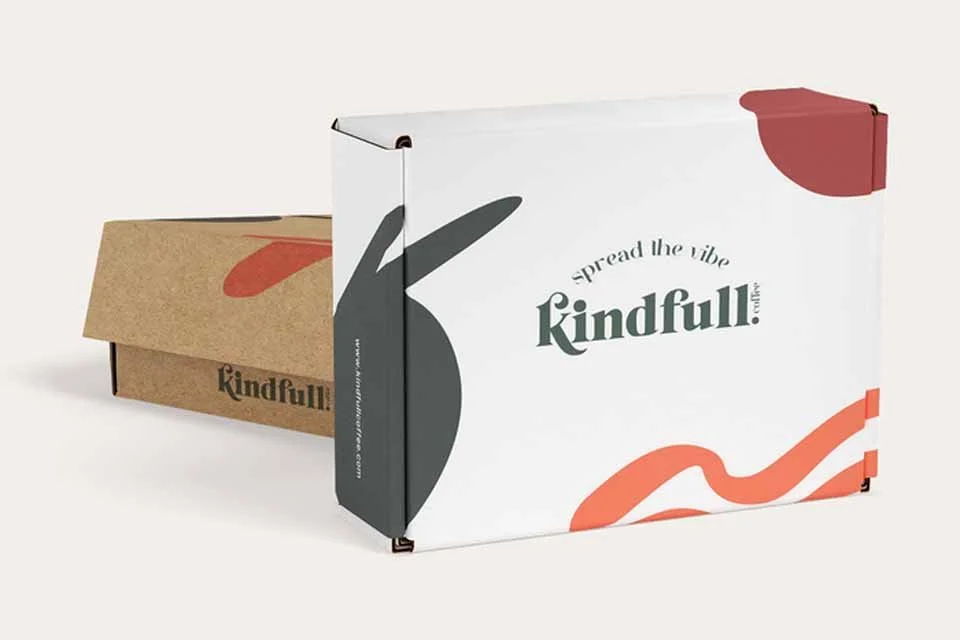
Mailer Boxes
The one-piece, folding mailer box is an economical way to create a fully printed box of almost any size. Flat-packed, these boxes are easy to store and easy to produce in almost any quantity.
Custom mailer boxes can also be printed inside and out, giving you extra space to throw under-the-lid rules or set-up instructions.
If you don’t want to go the full-printed route, plain mailer boxes are readily available in almost any size or color.
-
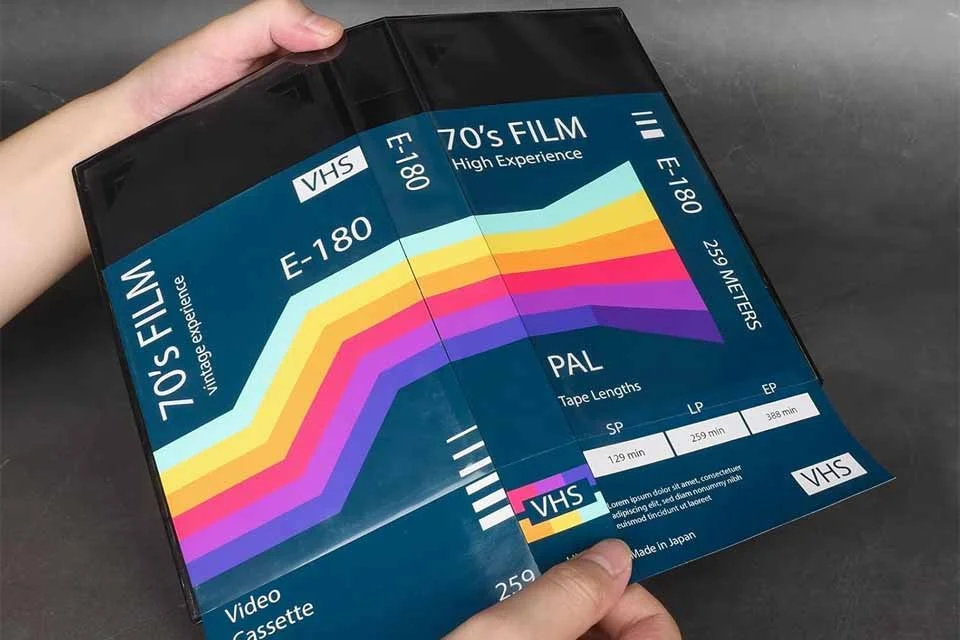
VHS Boxes
VHS clamshell cases are well-sized to fit small games, measuring 4.7×7.9×1.1”. These boxes typically have a sleeve that you can slide a printed sheet into, providing art for the cover, back, and spine with a single sheet of standard, letter-sized paper.
You can often pick these up in bulk from thrift stores or flea markets, or buy new ones from Amazon for around $1.50 each.
-
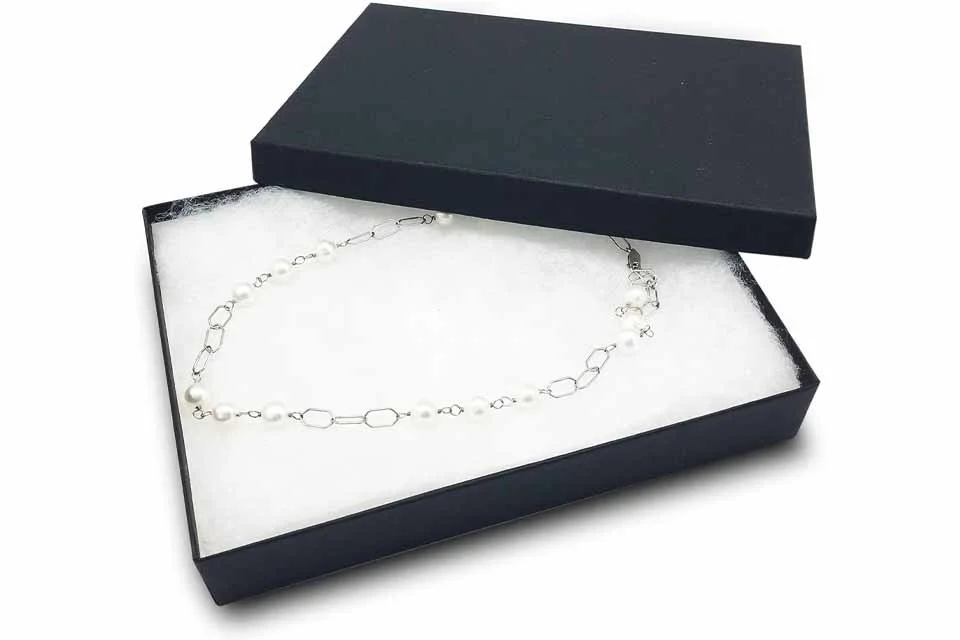
Jewelry Boxes
This gift box style commonly used for jewelry has durable construction and luxurious linen finish. Unlike a custom-printed two-piece box, jewelry boxes can be purchased in bulk in many different styles and colors.
Stenciling, screen printing, or vinyl transfer is a great way to add your game logo to the box, for a classic and graphic look. (Just be mindful of the texture!)
-
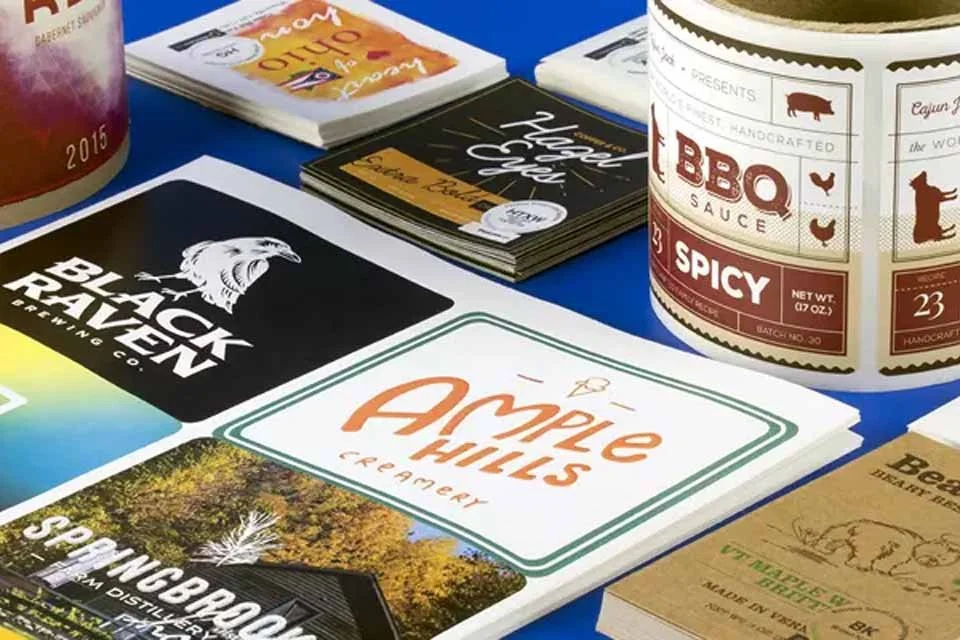
Sheet Labels
Sticker labels are a cost-effective way to add graphics to almost any box, as well as to less conventional packaging like jars. You can print these up yourself on inkjet label paper or get them professionally made through your local printer.
Bonus points for the crafty Texan: SheetLabels Southwest is located in the Austin metro area.
-
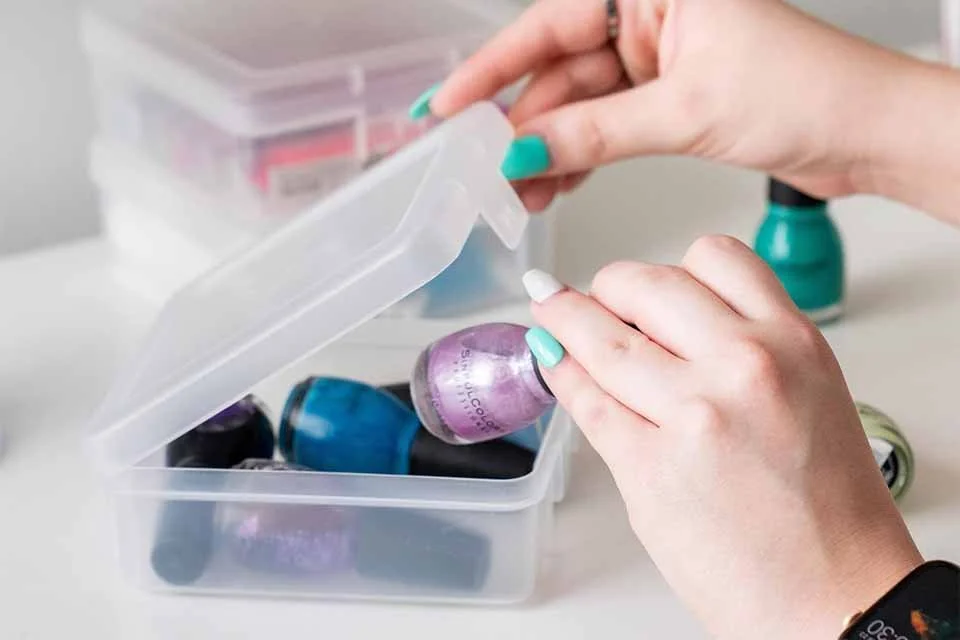
Pencil Cases
These hard plastic cases come in many sizes and colors. The durability and scale is great for card games as well as for games with many small components.
Add a label to the top of the box or take advantage of the translucent material to let a nicely-printed rules sheet double as a front cover.
-

Mint Tins
Mint tins are a classic (and classy!) way to distribute small box games. These hinged metal boxes are perfectly sized to fit a small deck or cards or a folding board and game pieces. Just add a label to the top and you’re in business.
Word to the wise: The most common mint tin is too narrow for poker-sized cards, so be sure that your sizes match up before buying.
-

Pine Boxes
Ready to paint, stencil, or label, unfinished pine boxes are sturdy, surprisingly lightweight, often have decorative latches, and can add lovely ambience to your game’s presentation.
Pine boxes can be found in many sizes, so shop around for the right fit (and be mindful of the box interior dimensions — these boxes are thicker than many other options!)
-
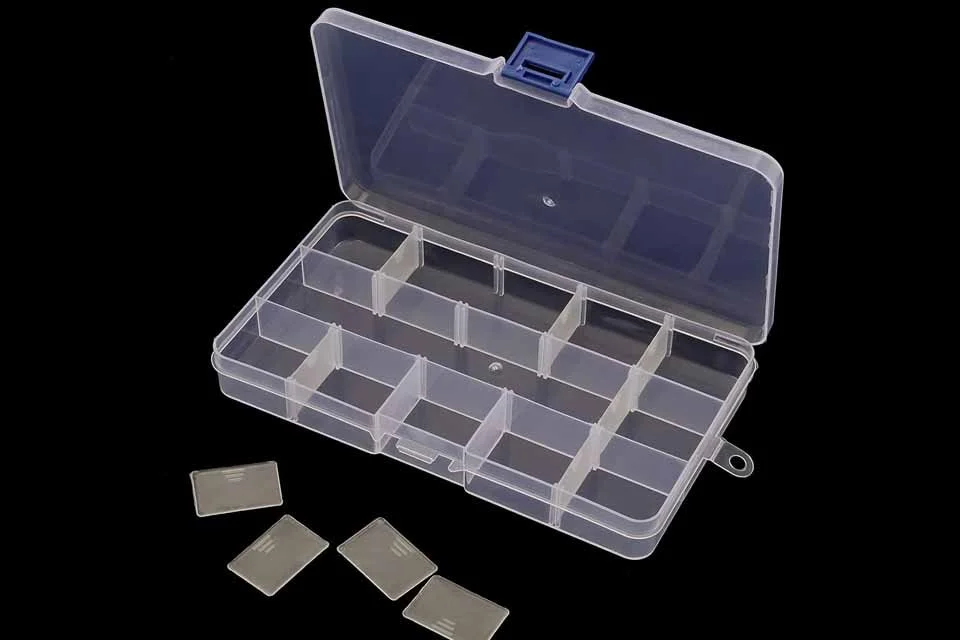
Grid Organizer Boxes
Fantastic for smaller games, adjustable grid organizer boxes are a perfect way to store a rules sheet, cards, and tokens.
-

Favor Boxes
Inexpensive and decorative favor boxes made of flat-packed card stock can be a great way to distribute your field editions.
While not durable, favor boxes can add character or even unfold to become game components themselves.
-

Jars
Think outside of the box! Plastic jars can make for really distinctive and thematic packaging for a game.
Just remember: Avoid glass packaging. Nobody wants shards of glass and meeples mixed together in their bag.
-
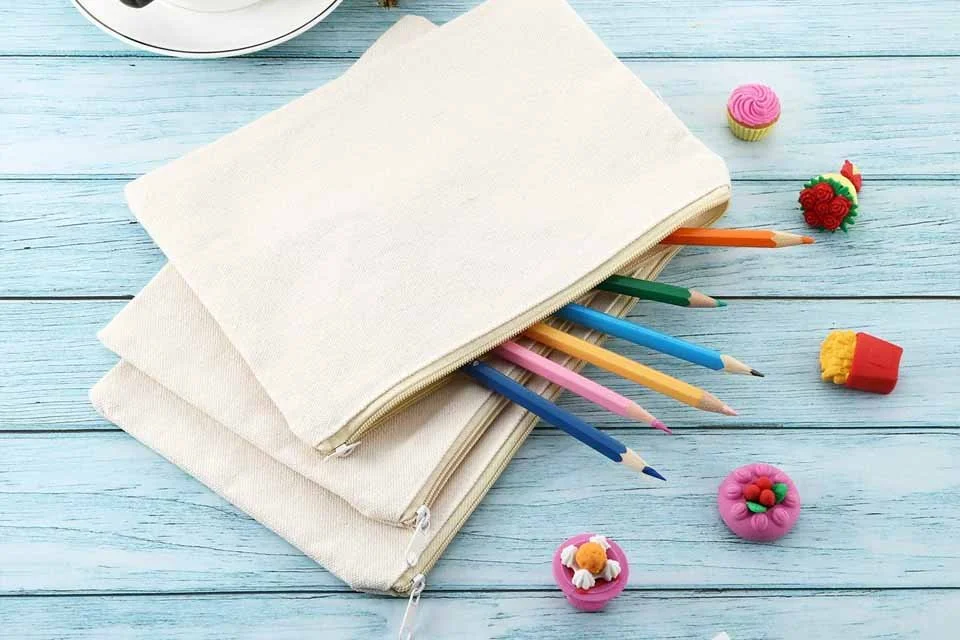
Canvas Bags
Blank canvas makeup bags with zippers are a great, lightweight solution for making field editions. While bags don’t offer any structural support themselves, they’re economical, easy to carry, and can be found in many different sizes.
To decorate the packaging, you can easily screen print on a design or order them custom printed.
-
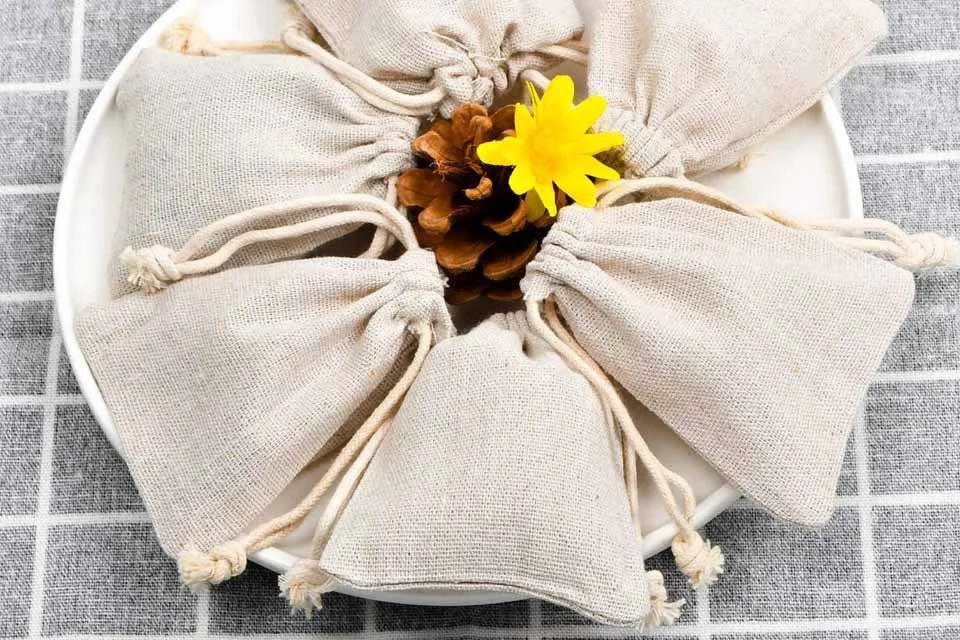
Drawstring Bags
Drawstring bags can be a thematic way to collect your game components together for your field edition.
These kinds of bags are found in many different colors and materials. Be mindful of your finish and your components: Drawstring bags can come open in transit and velvety textures can be difficult to decorate.
-
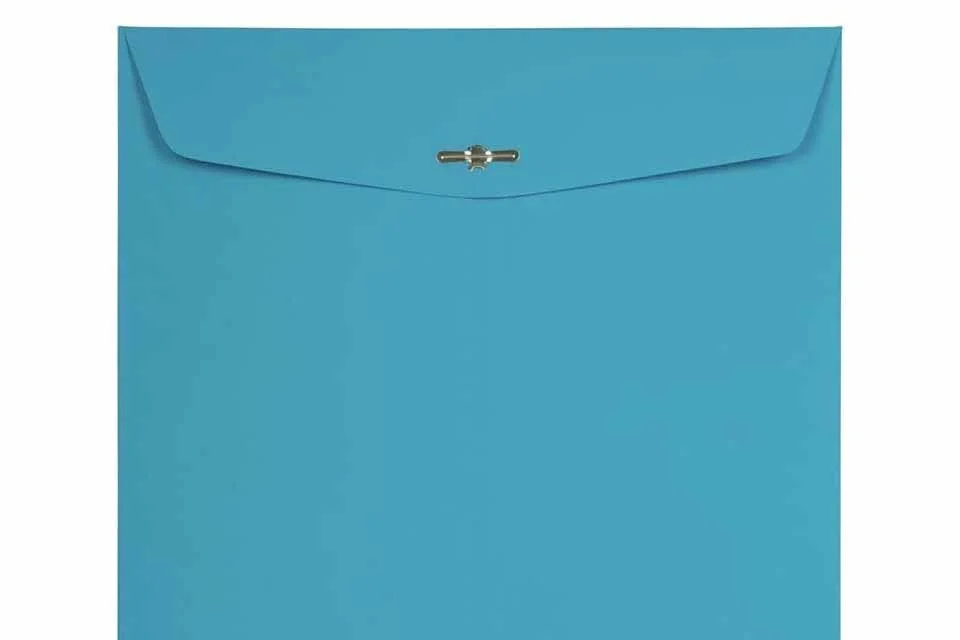
Clasp Envelopes
Available in a wide range of sizes, finishes, and colors, the classic clasp envelope is easy to decorate and can readily contain low-profile games.
-

Plastic Bags
The classic sliding zipper plastic bag — carrier of prototype games everywhere — is the ultimate low-cost way to package a field edition. If you want to lean all the way into the underground, rough-cut vibe of a night market, this is the packaging for you.
-
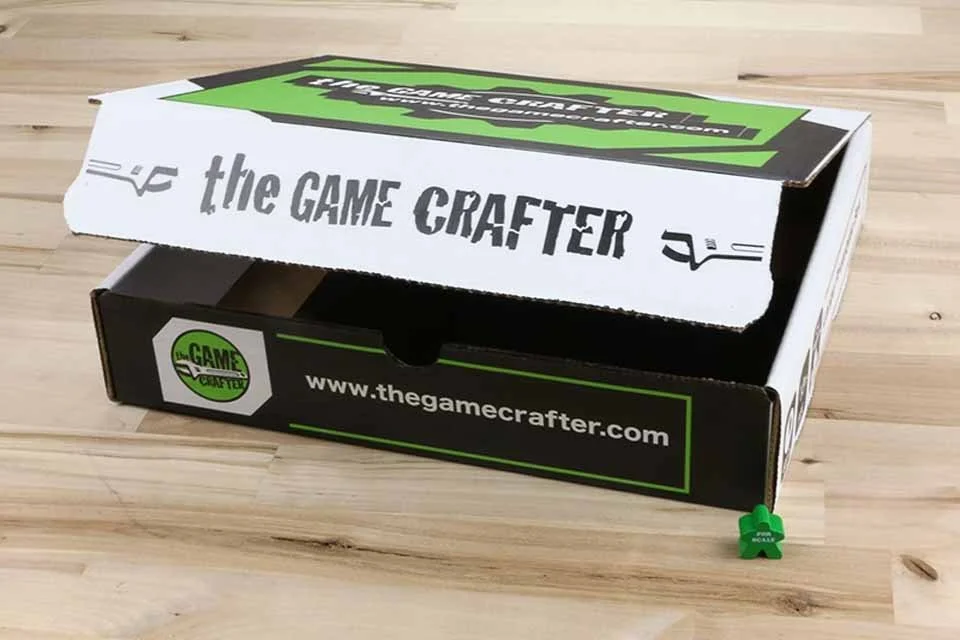
The Game Crafter
The Game Crafter is a US-based print-on-demand manufacturer offering a variety of packaging options in standard sizes.
-
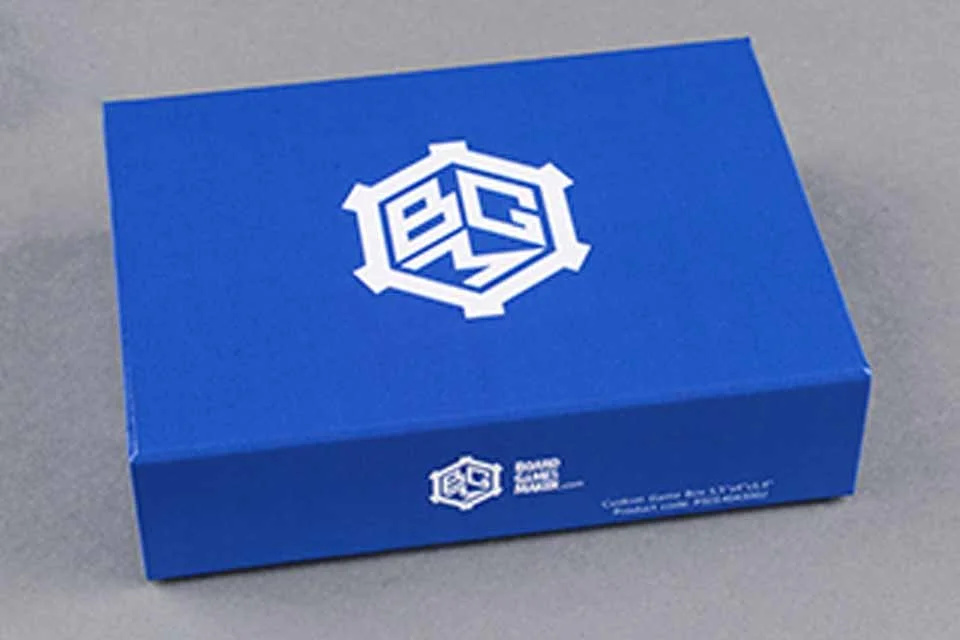
Board Games Maker
Board Games Maker is a China-based print-on-demand manufacturer that offers a fully custom selection of two-piece boxes and a wide variety of other packaging options. (BGM also does business under the names Make Playing Cards and QP Group.)
-
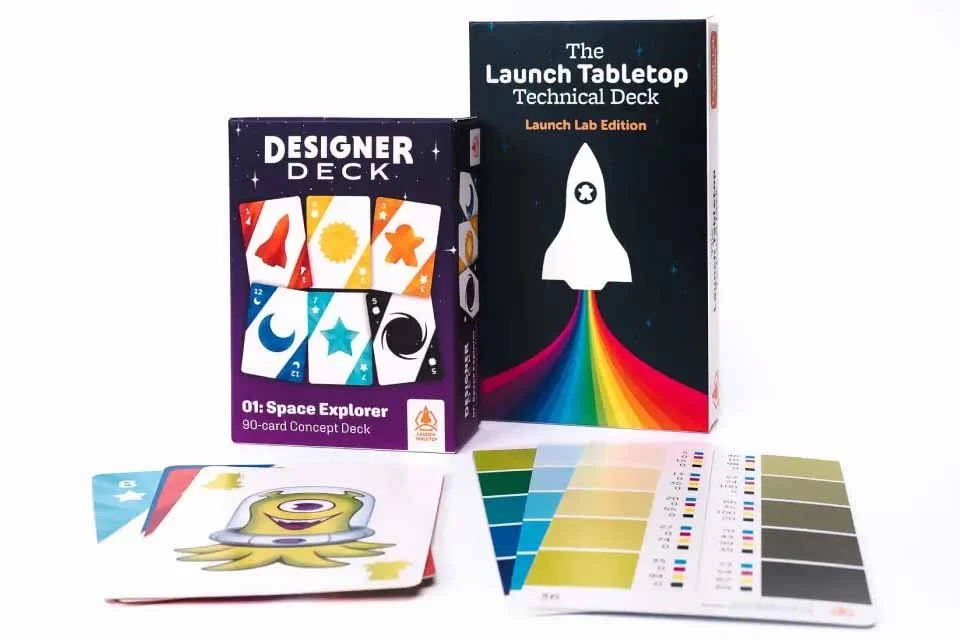
Launch Tabletop
Launch Tabletop is a China-based print-on-demand manufacturer offering several different box types.
Boards & Tiles
-
Game boards and tiles can be some of the trickiest components to affordably make in small quantities.
Look for ways to optimize your parts: Can the player boards be crisp card stock sheets instead of a 2mm thick board? Can you assemble a game board from double-sided sheets rather than a folding, multilayer board?
Is scoring, folding, and taping-together multiple ledger-sized sheets of card stock an option for your field edition?
You may find that a professionally produced board is worth the expense (they are board games, after all!), but consider your alternatives.
-

Board Games Maker
Board Games Maker is a China-based print-on-demand manufacturer that can do custom-sized board printing with a variety of fold and finish options. (BGM also does business under the names Make Playing Cards and QP Group.)
Also consider “giant-sized” playing cards (5×7”) as small player boards in lieu of using thicker, more expensive material.
-

Launch Tabletop
Launch Tabletop is a China-based print-on-demand manufacturer that can do custom-sized board printing with a variety of fold and finish options.
-

The Game Crafter
The Game Crafter is a US-based print-on-demand manufacturer offering boards in standard sizes.
-
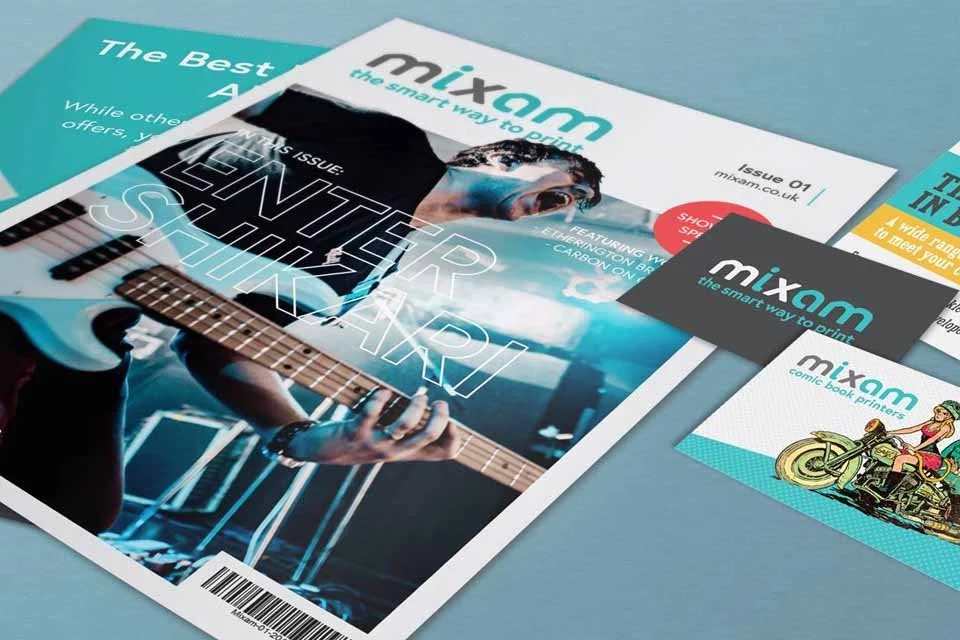
Mixam Art Prints
Rather than use 1.5-2mm board, you can create quality player boards using a heavy card stock (130lb cover / 350gsm / 16pt) with matte lamination.
You can optimize your order by fitting several onto one sheet, and then cutting them yourself.
-

Sheet Labels
Have a mailing box and a sticker label? Then you have a game board! You can print these up yourself on inkjet label paper or get them professionally made through your local printer.
Bonus points for the crafty Texan: SheetLabels Southwest is located in the Austin metro area.
Cards
-
Cards are simultaneously one of the easiest components to DIY and one of the hardest.
It’s very achievable to create good cards from common materials an techniques. It can also be extremely time consuming, especially in a card-heavy game.
Of all of your components, most strongly consider getting your cards professionally printed. Cards can be one of the least expensive components to produce and one of the most handled components in a game.
There are shortcuts to cards that handle surprisingly well, though! Putting card stock in penny sleeves may turn out better than you might think…
-

Board Games Maker
Board Games Maker is a China-based print-on-demand manufacturer that offers a plethora of card sizes, stocks, and finishes. (BGM also does business under the names Make Playing Cards and QP Group.)
-

Launch Tabletop
Launch Tabletop is a China-based print-on-demand manufacturer offering cards in standard sizes.
-

The Game Crafter
The Game Crafter is a US-based print-on-demand manufacturer offering cards in standard sizes as well as specialty shapes.
-
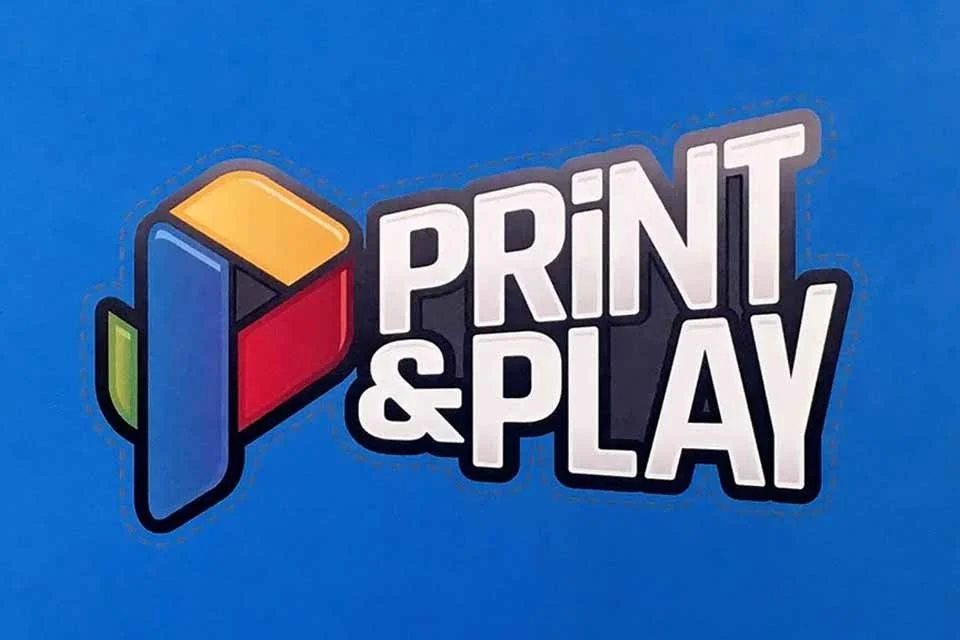
Print & Play
Print Play Games is a US-based print-on-demand manufacturer offering cards in standard sizes as well as specialty shapes.
-
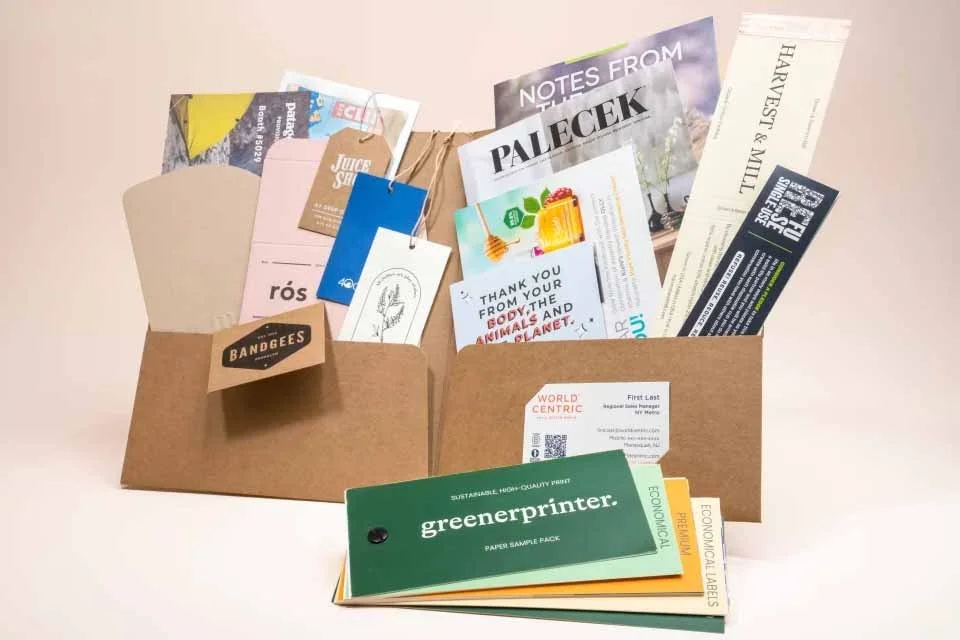
Greener Printer
The Greener Printer is a US-based print-on-demand manufacturer offering poker- and tarot-sized cards using recycled and renewable materials. (Prices are significantly lower for square-cut corners.)
-

How to Make Playing Cards
This video tutorial by Dining Table Print & Play runs through a few different techniques for making playing cards yourself.
Be warned: Making your own cards that handle professionally can be very time-consuming.
-

Mixam Art Prints
If you’re planning on cutting your full-art cards yourself, consider printing each sheet through a service like Mixam. You’ll want to use a heavy stock (130lb cover / 350gsm / 16pt), print each sheet double-sided, and use matte lamination on each side. You can fit 16–20 poker-sized cards on a 12×18” sheet depending on your bleed and border requirements (around $0.10–0.12 per card.)
-
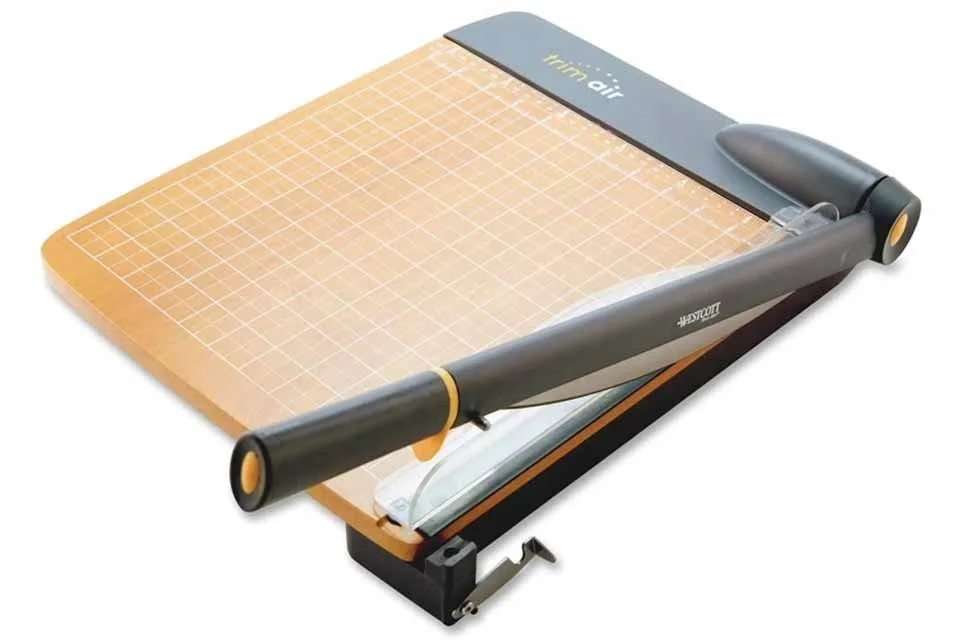
Guillotine Paper Cutter
Essential equipment for the crafty card-maker. Watch your fingers!
-

Spray Sealer
If you’re making a field edition, consider printing on card stock (300gsm / 110lb cover / 14pt or higher) and then spraying sheets with a fixative before cutting them out. This will improve handling and help keep the ink on the cards from smearing.
-
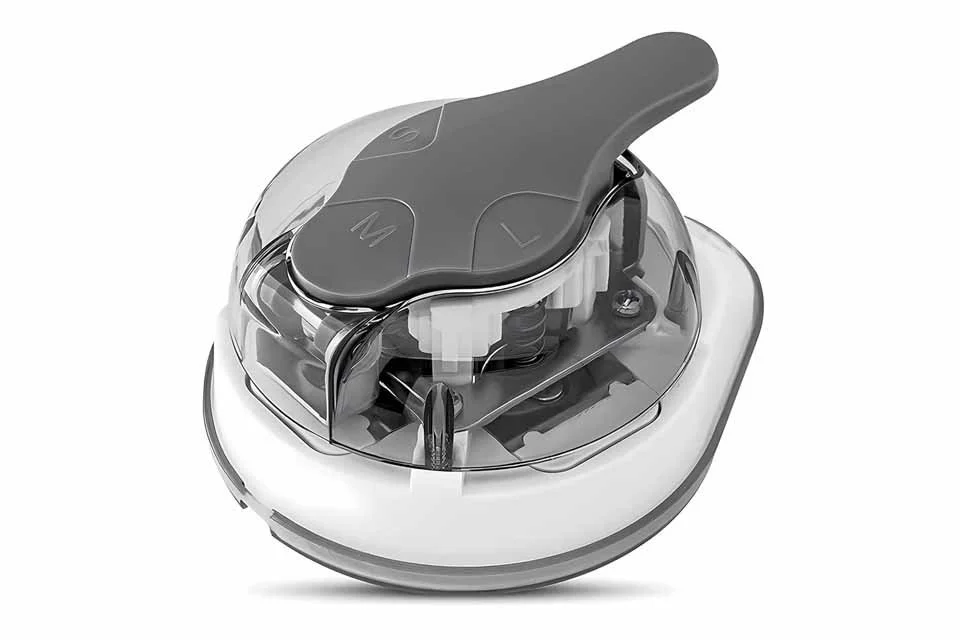
Corner Rounder
Playing cards generally have an R3 corner (rounded to a 3mm radius). If you’re planning on cutting your own cards and want rounded edges, pick yourself up a punch.
Dice
-
With dice, you’ll almost always want to buy stock components in bulk. Standard dice are a commodity that you can find in an abundance of different colors sold affordably in bulk.
In cases where each face of the die has a different effect, having a printed legend mapping each number to the effect is by far the most economical option.
If it’s absolutely essential for your game’s dice to have distinct faces, printing stickers and applying them to the dice is the most cost effective route.
Creating custom printed or engraved dice can be extremely expensive and may push your small batch game’s price point to a level that many consumers would balk at.
-
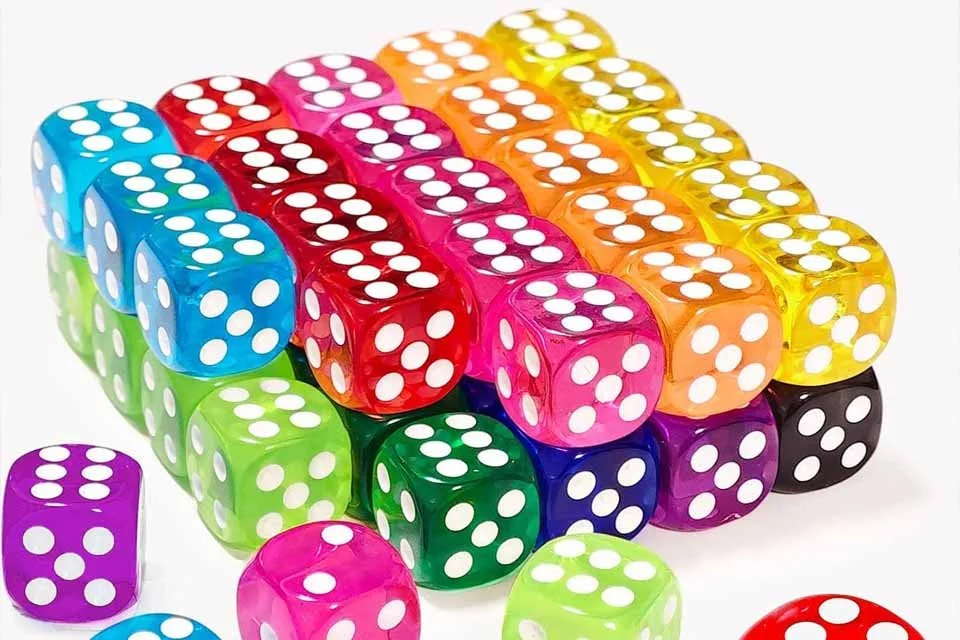
6-Sided Dice
You can find the standard D6 in bulk in a variety of colors through many different sellers. You may get the best price buying dice in large multicolor packs, even if you don’t need all of the colors.
-

4-Sided Dice
D4’s are readily available in large multicolor lots.
-

8-Sided Dice
D8’s are readily available in large multicolor lots.
-
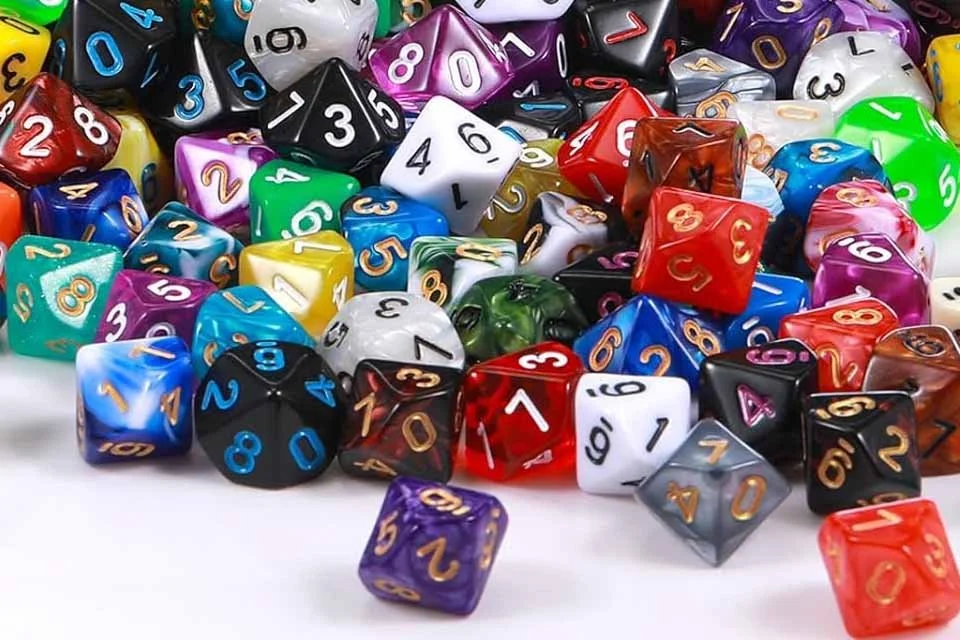
10-Sided Dice
D10’s are readily available in large multicolor lots.
-
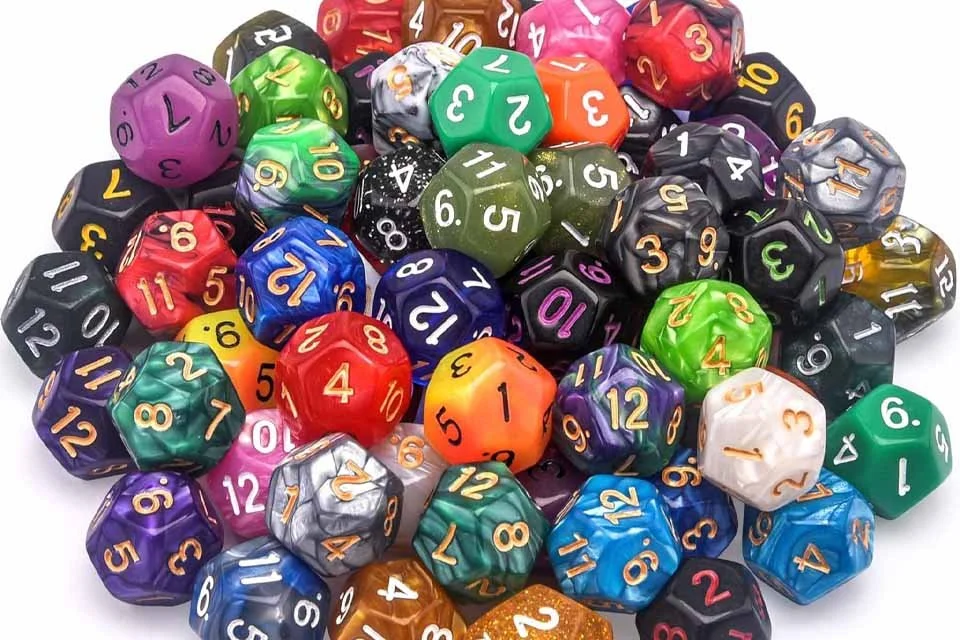
12-Sided Dice
D12’s are readily available in large multicolor lots.
-

20-Sided Dice
D20’s are readily available in large multicolor lots.
-
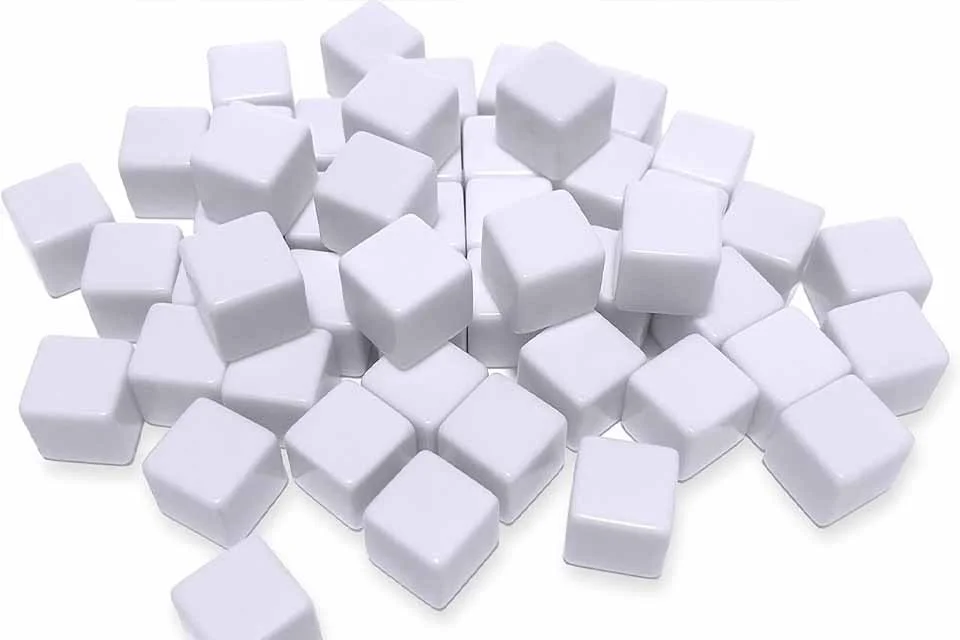
Blank Dice
Blank dice can be written on with permanent marker or a sticker can be applied to each face.
-

The Game Crafter
The Game Crafter is a US-based print-on-demand manufacturer offering a large variety of different premade dice.
-

Board Games Maker
Board Games Maker is a China-based print-on-demand manufacturer that offers common dice in a variety of colors. (BGM also does business under the names Make Playing Cards and QP Group.)
-

Launch Tabletop
Launch Tabletop is a China-based print-on-demand manufacturer offering common dice in a variety of colors.
Pawns & Tokens
-
Now here’s the fun stuff: Those clicky-clacky-fiddlybits that players get to collect and move around.
There are standard meeples and cubes, sure, but pawns and tokens are an area where small batch makers can absolutely shine.
Look for objects off the beaten path: Army men. Fish tank fill. Nail art charms.
What’s going to add fun, funky character to your game? What’s something that you’d never see in a retail shelf title? What would make your theme really sing?
You’d be surprised what you can find adding the word “bulk” to your store searches!
-
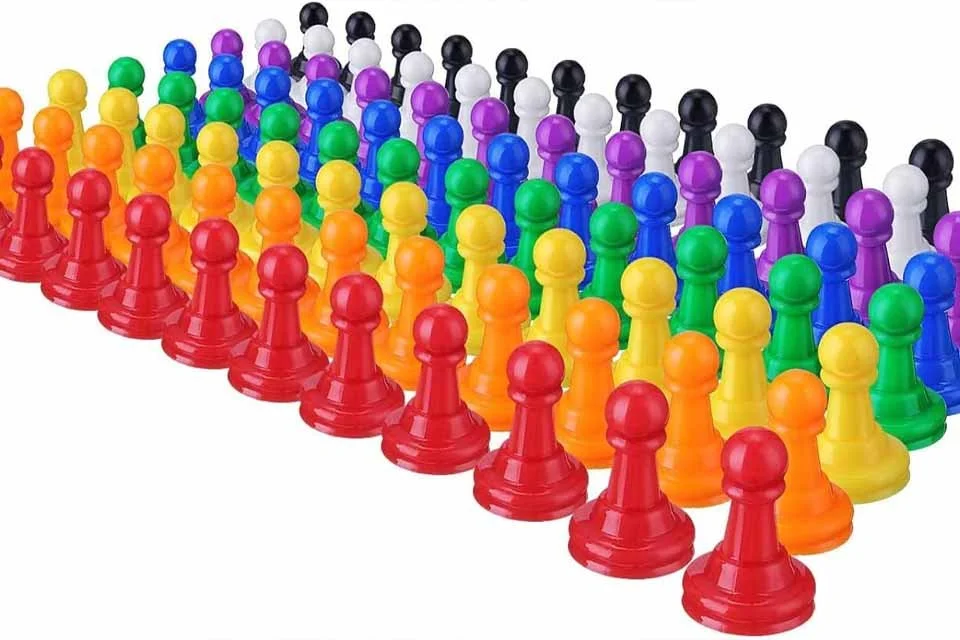
Chess Pawns
Standard 1” chess pawns are available in large, multicolor lots.
-
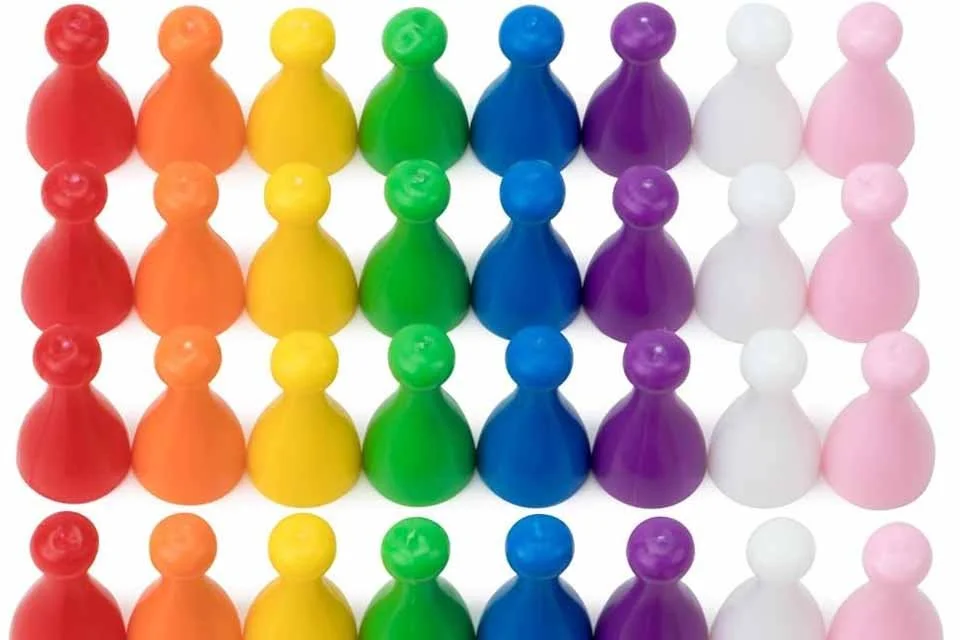
Halma Pawns
The smaller 25mm halma pawn can be purchased in bulk multicolor lots and can be a cost-effective alternative to meeples.
-

Wooden Pawns
Though more expensive than plastic and with fewer color options, you can also purchase 1” wooden pawns in large multicolor lots.
-
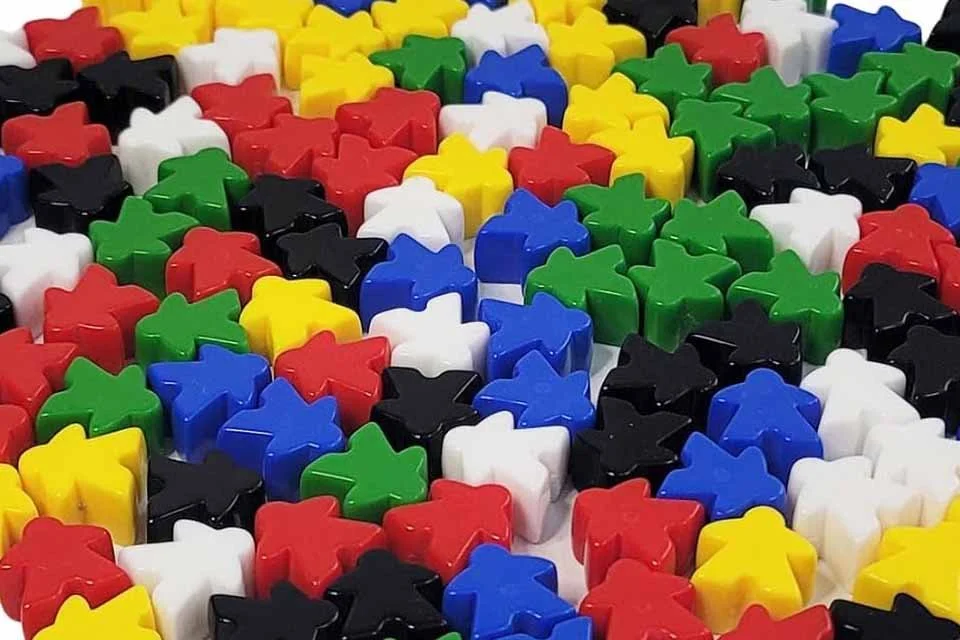
Plastic Meeples
Plastic meeples are less expensive than their wooden counterparts and can be purchased in bulk at around $0.07/unit.
-
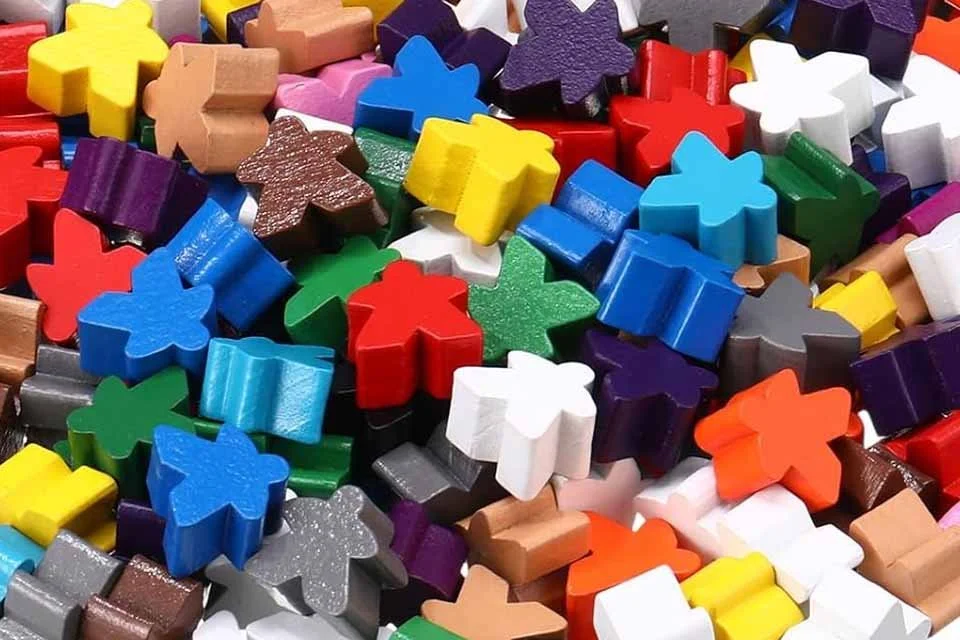
Wooden Meeples
While wooden meeples are a bit more expensive than plastic, if you’re willing to use different color sets for each box, you can get them at around $0.10/unit.
-

Standees
Printing 110lb cover (14pt) paper and folding it over into a standee is a perfect alternative to expensive minis.
-

Finger Puppets
Want to get wacky? Finger puppets, army men, and other party favor figurines make fun and creative stand-ins for player pawns.
-
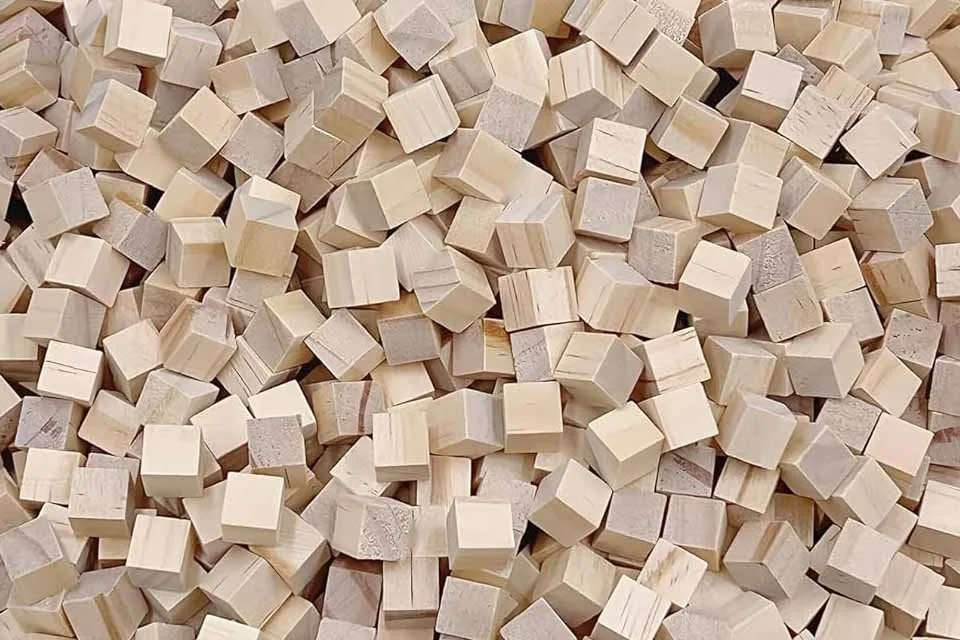
Unfinished Wooden Cubes
Unfinished wooden shapes can be purchased in bulk at great rates (around $0.01–0.02 each).
-
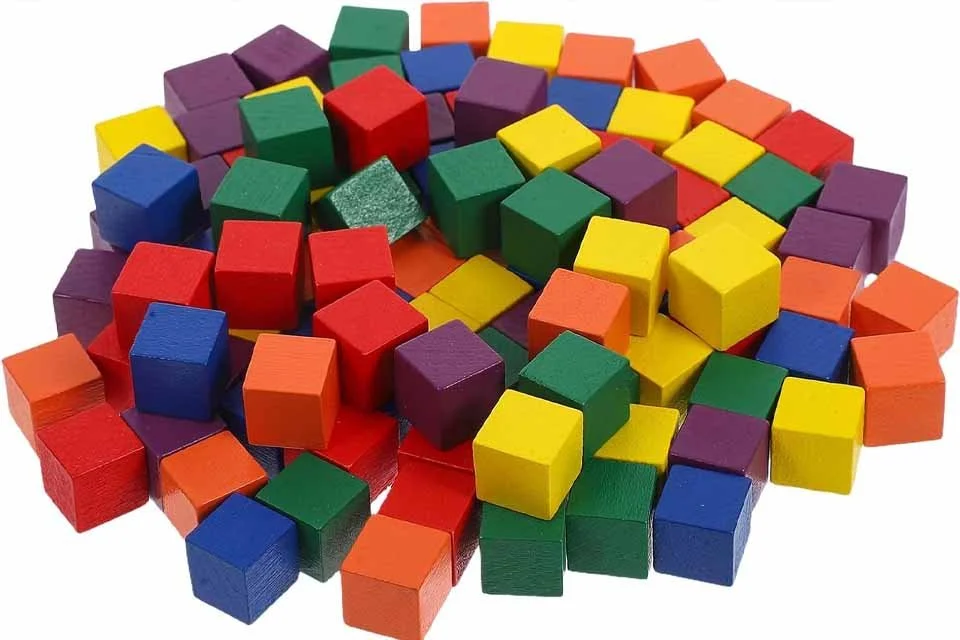
Painted Wooden Cubes
Colorful wooden shapes tend to get significantly more expensive, at around $0.10 per unit.
-
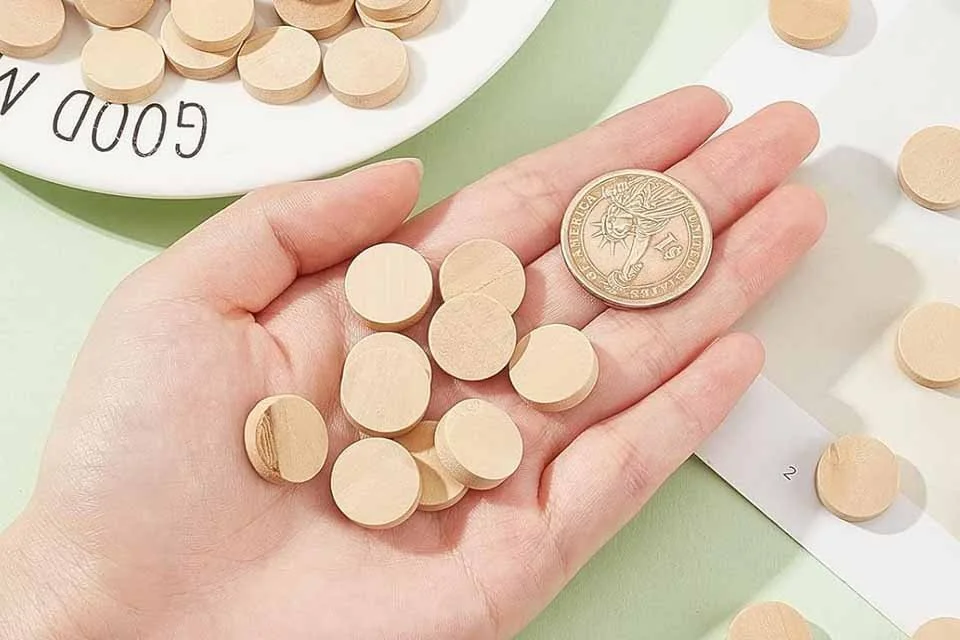
Unfinished Wooden Discs
Unfinished wooden shapes can be purchased in bulk at great rates.
-
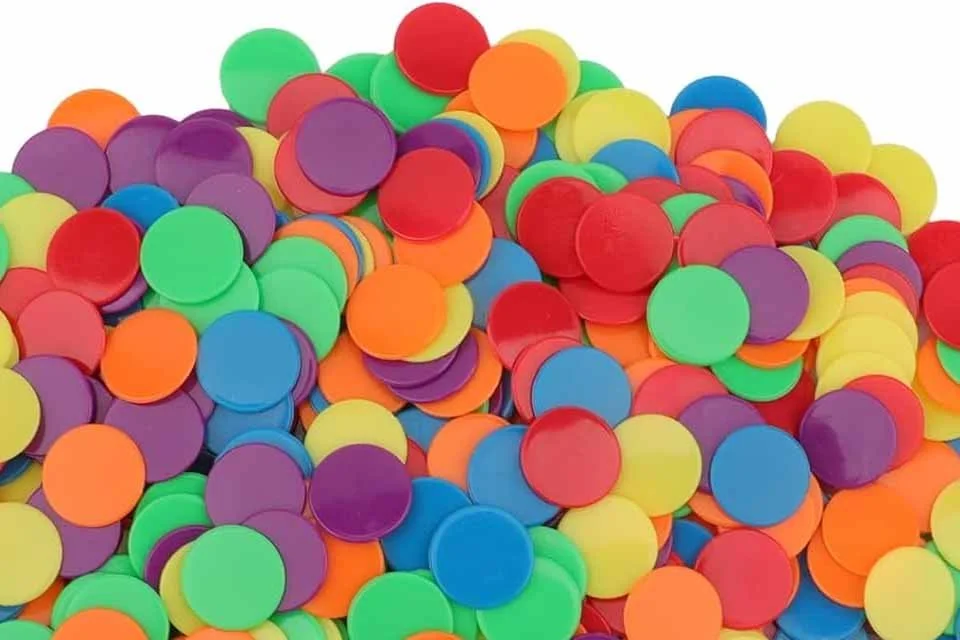
Plastic Marker Discs
Thin plastic marker discs are an extremely cost effective token option.
-
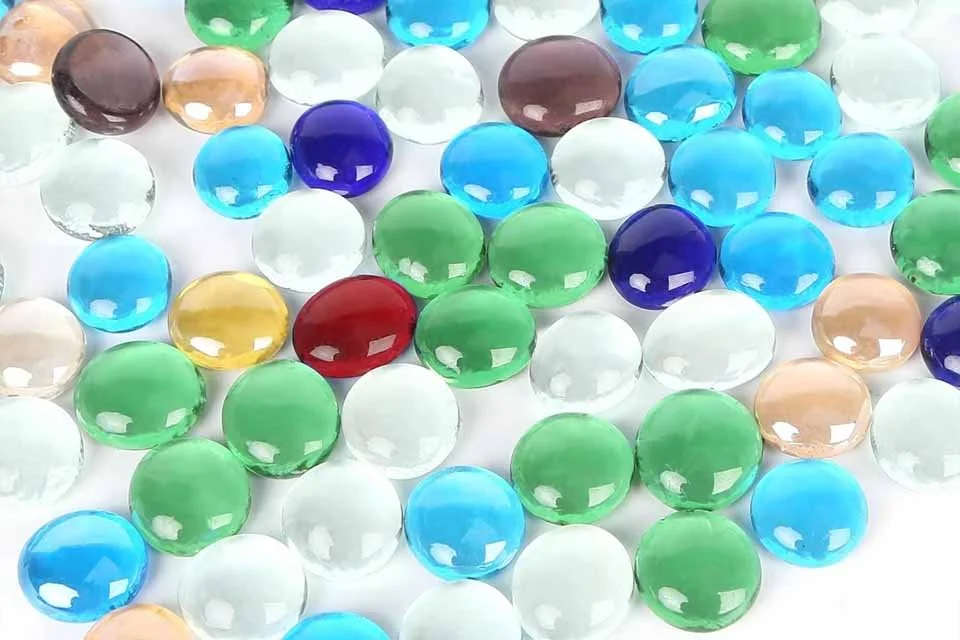
Flat Glass Marbles
Available in many different colors, flat glass marbles have a nice heft in players’ hands. Marbles are generally sold by weight and color.
-
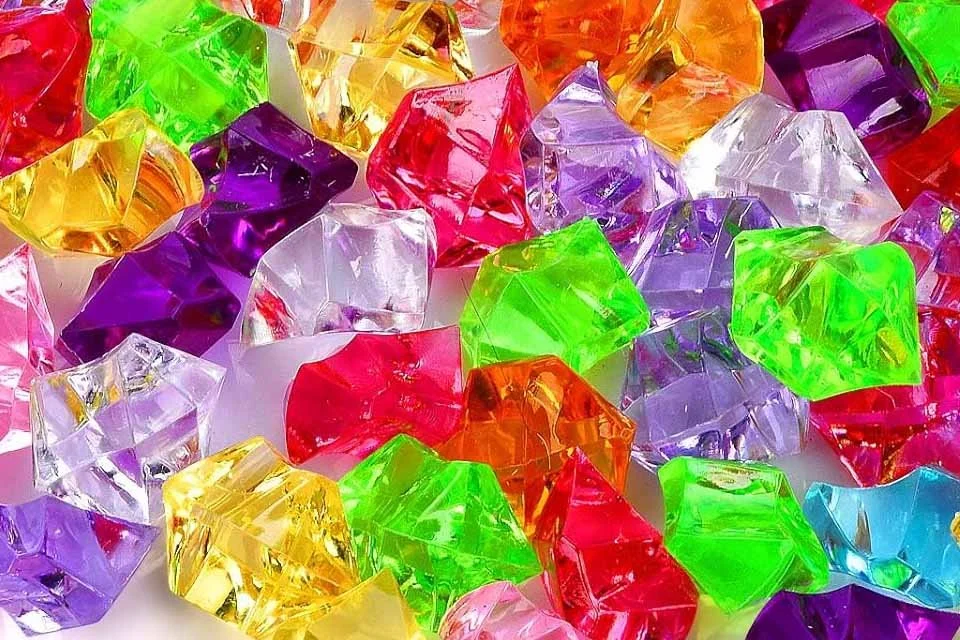
Acrylic Gems
Sold by color or in multicolor packs, acrylic gems are a lightweight, attractive component for resource tracking.
-
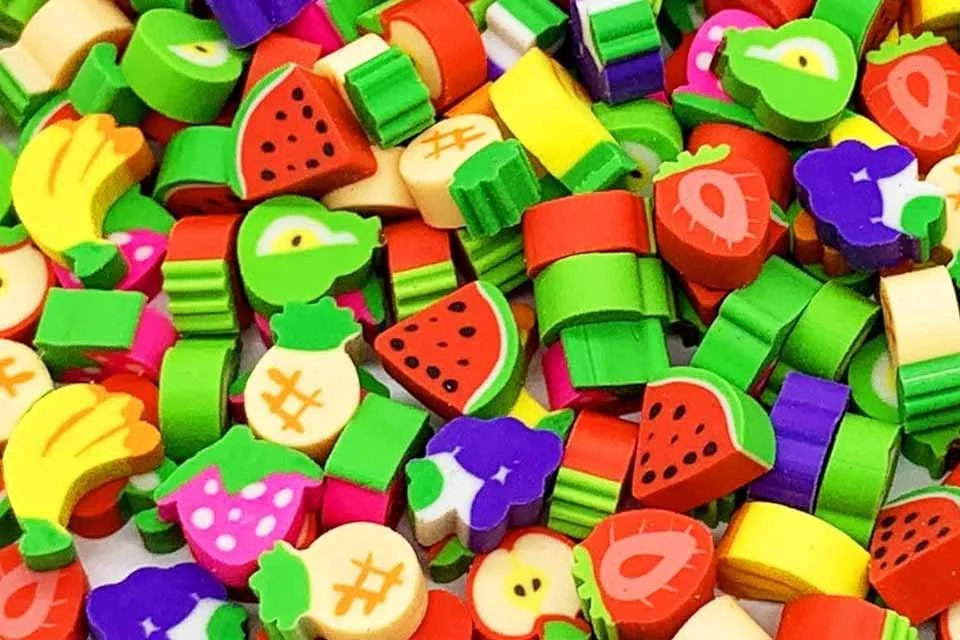
Mini Erasers
Especially for items like food or candy, mini erasers can make for very attractive, very durable tokens at a low price point.
-
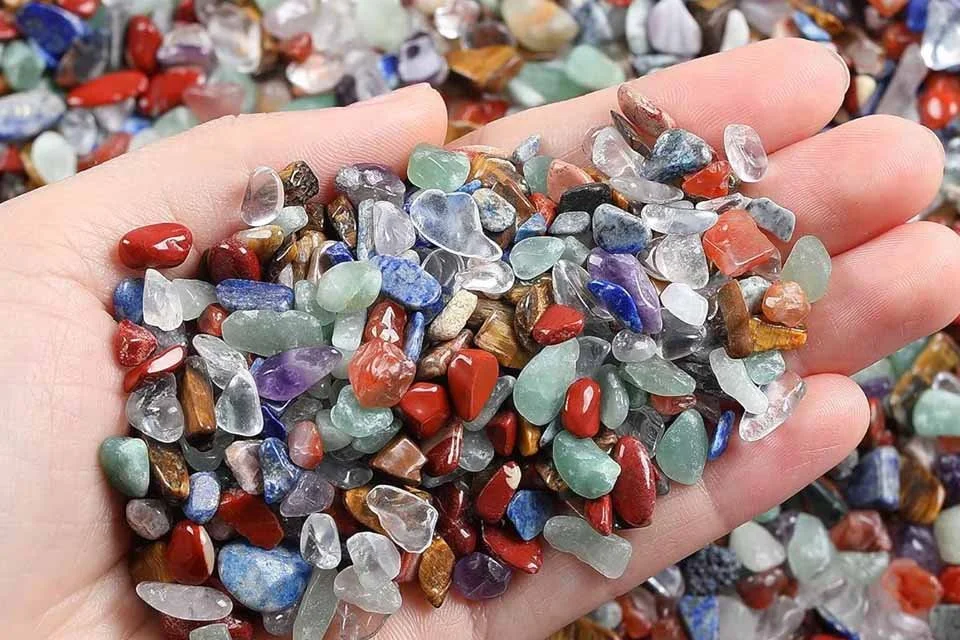
Polished Gemstone Chips
Polished stone chips are often used for decorative fills and can be purchased in bulk in different varieties.
Be mindful that you do see size and color inconsistencies with real stones, so make sure that you’re choosing distinctive varieties if you’re using them for multiple resource types.
-

Beads
There’s a huge variety of bead options out there — from characters to objects to geometric designs. Be mindful of the size of the beads (under 10mm can be hard to handle!) and whether or not they’re likely to roll away (look for flat backs!)
-
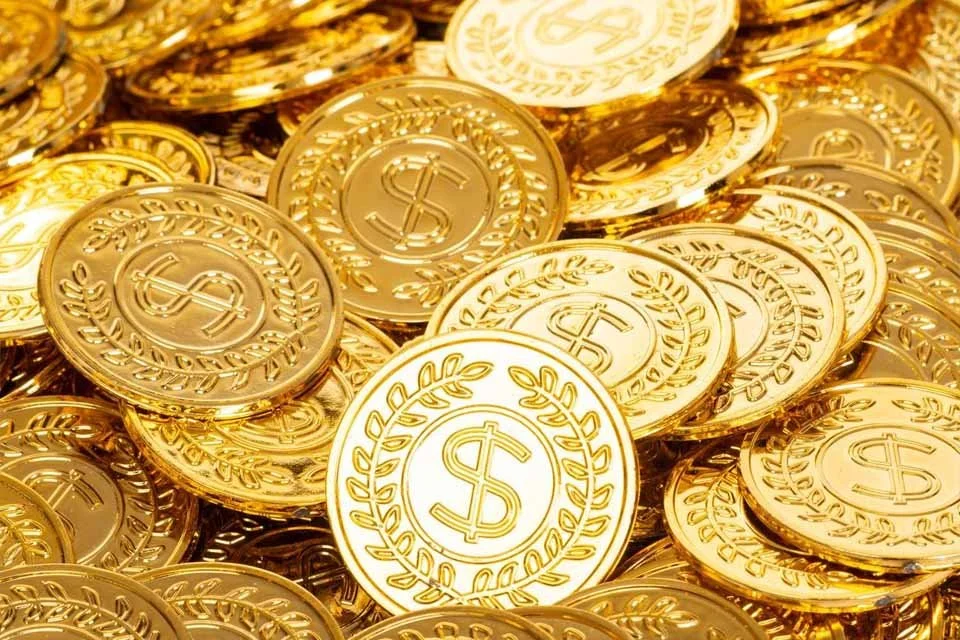
Plastic Coins
Gold plastic coins are always a hit as game currency.
-

Poker Chips
Poker chips with denominations on them can be a cost-effective way to track scores or resources.
-

The Game Crafter
The Game Crafter is a US-based print-on-demand manufacturer offering a huge variety of pre-made tokens.
-

Print & Play
Print Play Games is a US-based print-on-demand manufacturer offering a variety of wooden and plastic tokens in standard shapes and colors.
-

CUBE4ME
A Polish (EU) supplier that sells an incredible variety of unique tokens and common component sets.
Inserts & Security
-
Don’t just think about the outside of your game: The interior of the package is essential to safely transport and store your components.
It could be as simple as putting a paper band around cards or putting components into baggies — or as involved as building a custom insert.
Be sure that: (1) your components don’t get mixed up and (2) your components don’t rub against and damage one another inside of the box.
Insert and security items can be purchased in high volume very cheaply, so they’re a good item to buy and use for several projects or to split costs on with other small batch manufacturers.
-

Plastic Bags
2mil baggies with simple seal tops are component in many retail gains for a reason: They’re inexpensive, lightweight, and effective.
-
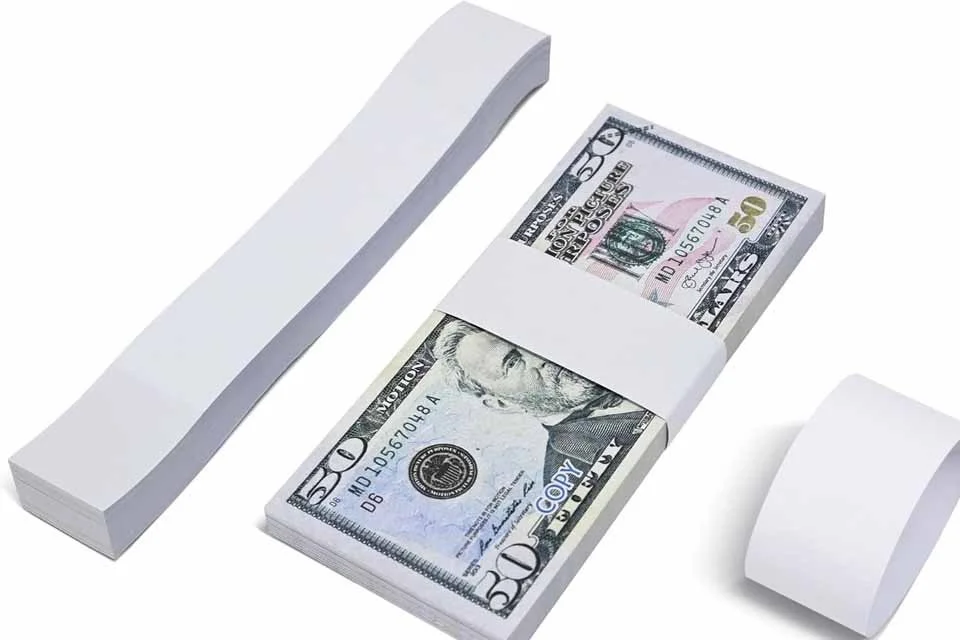
Paper Bands
Paper bands are popular, more eco-friendly option than plastic wrap to keep bundles of cards secured together.
-
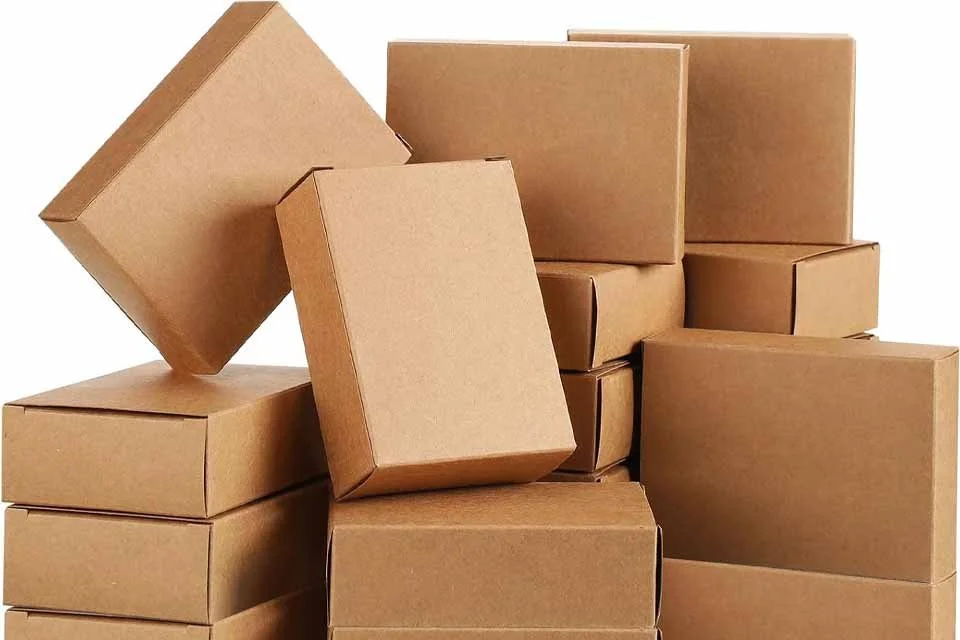
Soapboxes
You know what else is the same size as a bar of soap? A standard deck of cards! Small tuck boxes are a no-fuss way to help protect and group cards and other components within a larger game container.
-
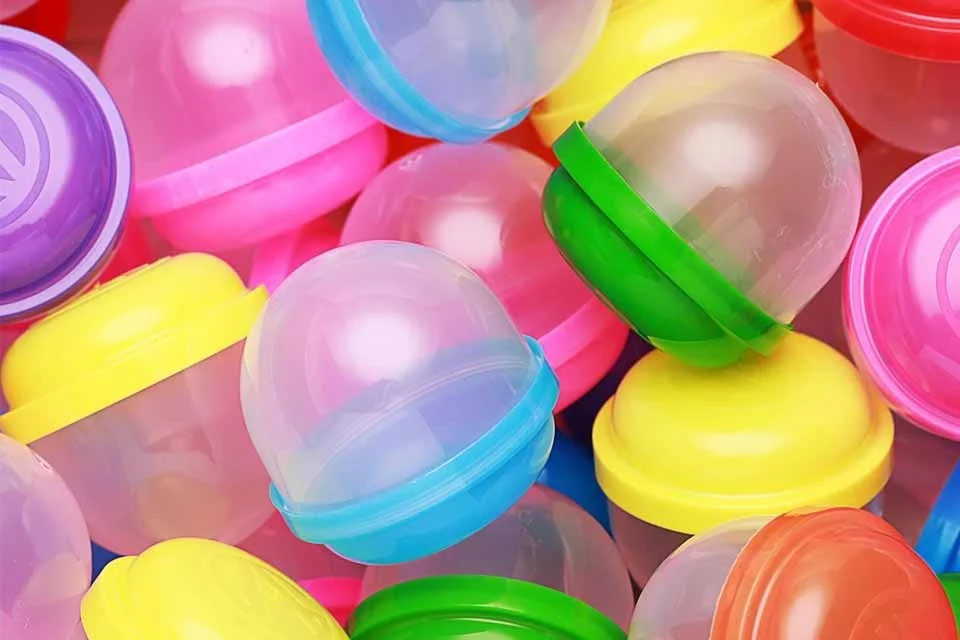
Vending Machine Capsules
Inserts and in-box security can add both utility and fun to your game. Case in point, plastic vending machine capsules!
-
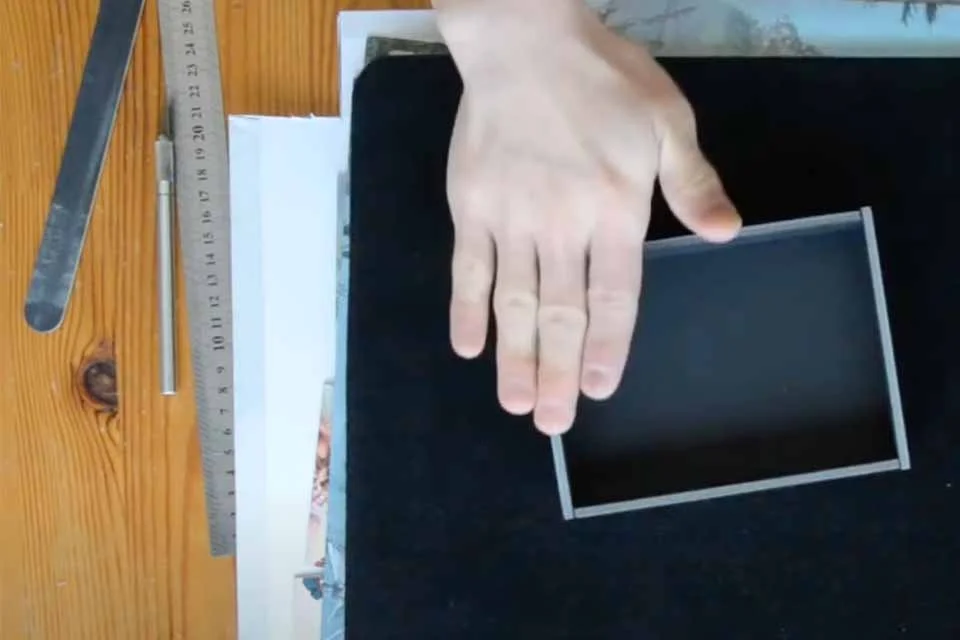
Building a Foamcore Insert
This video tutorial walks through techniques to create custom inserts out of foamcore. Similar techniques work for building cardboard and card stock inserts (just be sure to use at least a 14pt / 110lb cover stock, preferably heavier.)
Instructions & Booklets
-
For games with longer or more involved rules, a nicer rulebook or folded rules sheet is a big plus — but you don’t need to break the bank on it. You can always go low-fi and print a black and white rules sheet on folded letter-sized paper or index cards.
The important thing is that people understand how to play your game. For bonus points, you can always have a QR code that links to a video explanation or full-color PDF copy of the rules.
-

Mixam
Mixam is a US-based print-on-demand manufacturer that specializes in booklets and magazines. Offering a number of different formats, the 8.5×5” digest format with stapled binding is an economical choice for longer rulebooks.
-

The Game Crafter
The Game Crafter is a US-based print-on-demand manufacturer offering many standard rule sheet and rulebook options.
-

Print & Play
Print Play Games is a US-based print-on-demand manufacturer offering custom sized rule booklets.
-

Greener Printer
The Greener Printer is a US-based print-on-demand manufacturer offering booklets and brochures using recycled and renewable materials.
Other Components
-
Bring Your Own...?
If you’re making a field edition, you should feel free to request that players supply readily available components. Standard playing cards and 6-sided dice are in every gamer’s drawer already. Timers can be cell phones. Most people have something that can be used as tokens — coins or poker chips or edible chips! — in their homes.
And it doesn’t need to stop there: Even table editions can reasonably request that players bring their own paper and pencil to a drawing game, for example.
Consider these questions as you plan your parts list: How much value does the component bring to the game experience? How specialized does the component need to be to work in the context of the game? How likely is a person to already have on hand something very similar to the part?
-

Sand Timers
Sand timers can be commonly bought in bulk in 5-minute, 2-minute, 1-minute, and 30-second durations and in multiple colors.
-
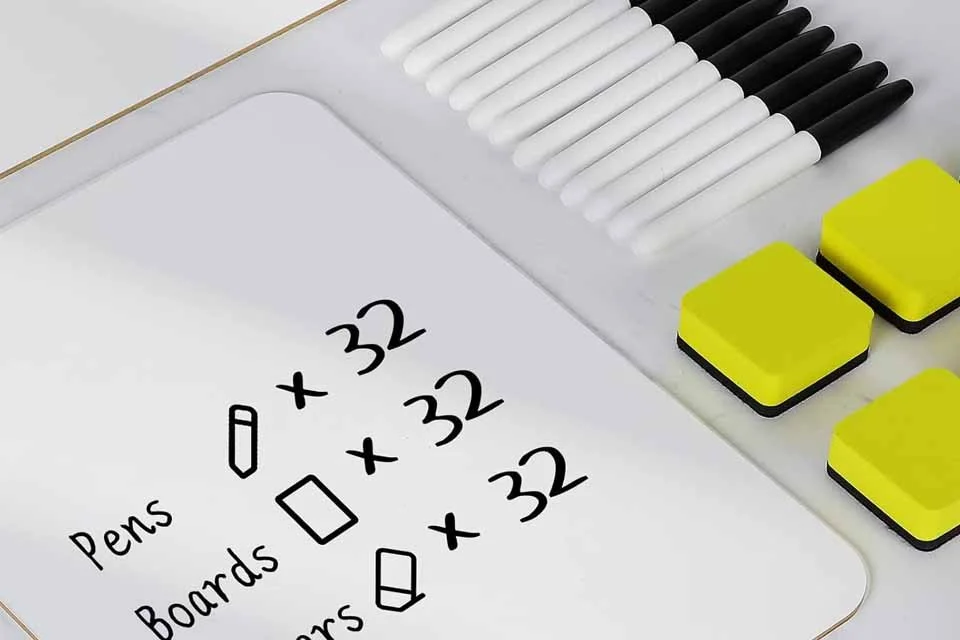
Dry Erase Boards
Dry erase boards, markers, and erases can be purchased in bulk classroom sets that are ideal for small batch production.
-

Dry Erase Pockets
Dry erase pockets easily convert any sheet of paper into a reusable writing/drawing surface, even giving you the ability to move a drawing from one surface to another.
-

Arrow Spinners
When your game needs more random pointing, all paths point towards the classic arrow spinner.
-

Drawstring Bags
You can pick up classic drawstring bags in bulk in a variety of colors, patterns, and textures. Look for favor bags for different occasions or holidays for some extra thematic flair.
-
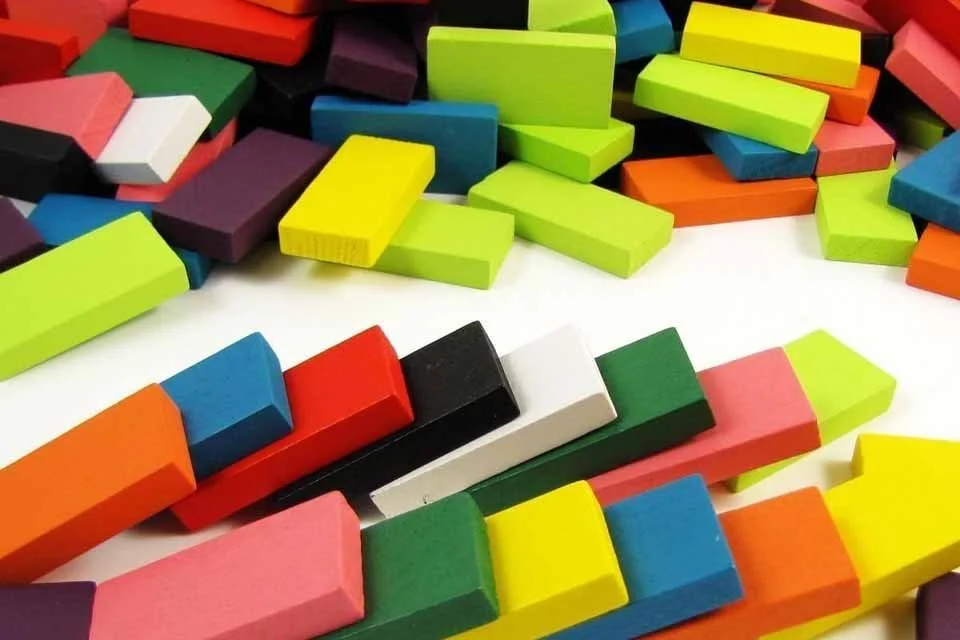
Blank Dominoes
They’re colorful. They’re tactile. They’re ready to draw on or apply stickers. What more could you want?
What to Avoid
-
Getting creative and letting your imagination run wild is what the spirit of a night market is all about. You should explore new ideas and unconventional approaches to the art of game design. Take advantage of the small batch format to do unexpected and otherwise impractical things.
Always remember: You’re ultimately making a product that needs to be bought and sold. That means that the product needs to be safe for your players to own and interact with.
-
Breaking, Shattering & Splintering
Brittle components or components that shatter aren’t going to survive the trip home in your player’s convention backpack.
Avoid thin strips of glass, wood, or plastic that can easily go from fun to dangerous.
-
Rotting & Spoiling
You know what’s fun? A game about cheese!
You know what’s not fun? A game with real cheese in it!
If you’re going to include food or other substances that might spoil as part of your game, the player should bring those from home — not find them rotting in the box.
-
Sharp & Pointy
Reaching into a game box and getting jabbed is no one’s idea of a good time. Round or sand those sharp edges down.
And be kind to your players who are boarding planes: Don’t include any metal components in your game that could be misconstrued as a blade.
-
Liquids
It’s fine for players to add water to your game as part of the play experience (it could be super cool!), but don’t include liquids in your game box.
-
Chemicals
Be mindful about the chemicals that you use to treat any components, and ensure that they’re safe to make contact with skin in their dried form.
Players may have reactions to scented chemicals especially, so be upfront if your game contains something like a scratch-and-sniff element.
-
Unlicensed IP
Use your best judgment about the products that you incorporate into your small batch game. There may be artistically necessary and fair use reasons why a Mickey Mouse figurine is a game component, but know the rules and accept the risks before you go there.
-
Games for Kids
In the United States, products intended for use by children under the age of 13 need to abide by CPSIA child-safety testing standards. Yes, even homemade and small batch products.
Products for kids 8 and up that are made solely of ordinary ink, paper, paperboard, unfinished wood, and untreated textiles may be exempt from chemical testing, but do still require a Children’s Product Certificate and tracking label, as well as compliance with guidelines like ASTM F963.
Small batch manufacturers of children’s games must register with the CPSC, and may be able to rely on documentation from their suppliers to help relieve their testing burden.
-
General Use Products
If your game is designed for all ages and isn’t primarily intended for use by kids under the age of 13, it may be considered a general use product.
General use products may have their own testing and certification requirements. The CPSC provides a tool to help determine what testing and certifications apply to your product.
It’s unusual for a board game to require a conformity certificate, but it all depends on the components that you add. (Not so subtle hint: Avoid things like batteries.)

Stay in the Loop
Find out when there are calls for exhibitors, learn how you can participate, or just get updates by leaving your info.


